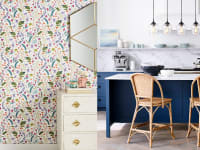Design fatigue? Consider these contemporary takes on mid-century modern
From a contemporary Kelly Wearstler to a classic Saarinen
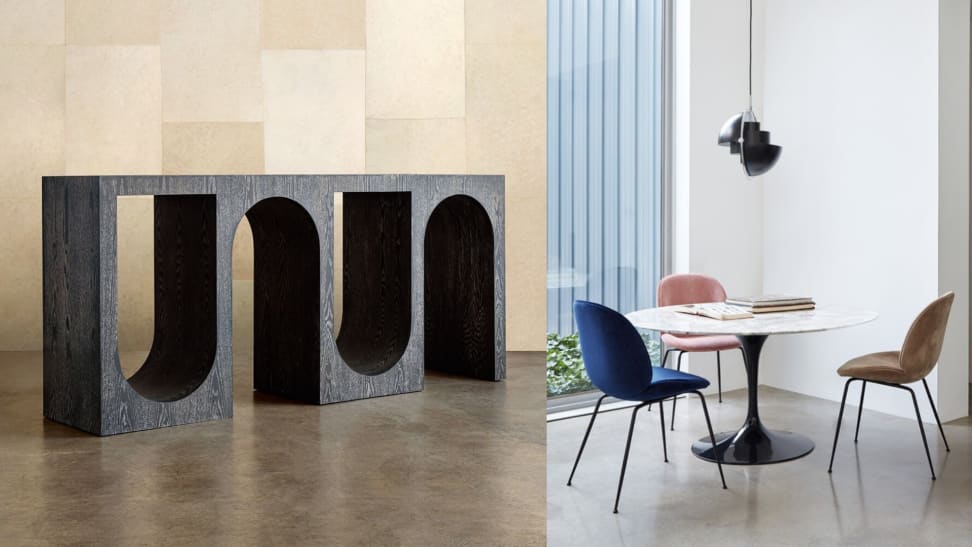 Credit:
Kelly Wearstler / Design Within Reach
Credit:
Kelly Wearstler / Design Within Reach
Products are chosen independently by our editors. Purchases made through our links may earn us a commission.
It's true that the mid-century modern movement has been holding strong in the world of home design for years. In fact, it's never really gone out of style since it started 70-plus years ago.
And, yet, while mid-century modern is by no means new or trendy, it is certainly a design concept that Americans can relate to during a year overturned by a pandemic. With more time than ever spent at home, many have a renewed interest in stability, which translates to approachable home décor and comfortable living.
Here's how to decide if it's right for your home—and where to find pieces at all price points.
So, what is mid-century modern design?
This American design genre/style/movement—however you want to label it—covers it all, from architecture and furniture to art and graphic design, and it pioneered a completely new style for its time.
As its name indicates, it came about during the mid-20th century post-WWII, roughly 1945 to 1969. According to Industry City’s Christophe Pourny, an antique restorer and the author of The Furniture Bible, mid-century modern is a 180-degree turn from its preceding design movement art deco.
“The new concept, what would be called modern design, felt like a breath of fresh air," he says. "It was viewed as a psychological freedom from the rules of design.”
It was also inspired by the state of the post-WWII world, and, as Pourny points out, a scarcity of materials. People wanted to put the bleakness of conflict and mass destruction behind them and seek solace in nature’s beauty and function’s simplicity.
Within the realm of home and interiors, designers like Herman Miller and Florence Knoll created empires, along with Milo Baughman, Richard Neutra, Eero Saarinen, Le Corbusier, Charlotte Perriand, Gio Ponti, Joseph Eicher, and Eileen Gray.
Thanks to Ikea, the Danish and Scandinavian take on the design—focusing on curves, as well as teak, birch, and rosewood materials—is familiar to many of us today.
Contemporary mid-century modern has a refreshed, bold look
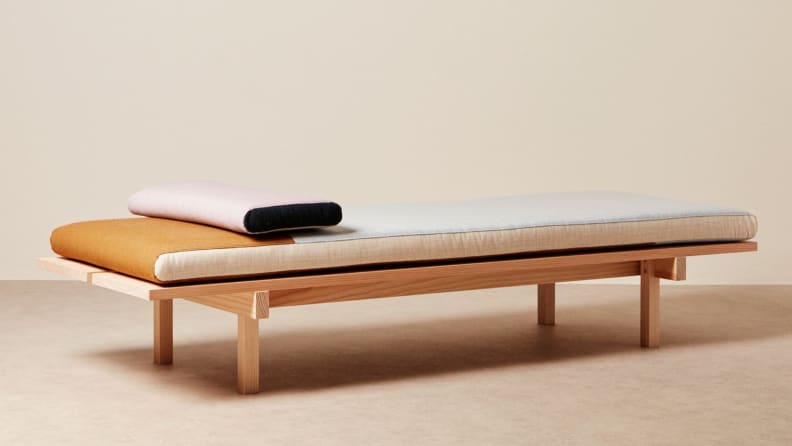
For a minimalist piece for living room or bedroom, Goodee features the Reykjavik Daybed with its frame crafted from strong German Douglas pine by Skagerak.
Today’s contemporary designers are challenging mid-century modern’s clean, minimal design and negative space (think open sides to chairs and furniture) with their own small details, while others are staying true.
“Classic pieces created in the ’30s by Le Corbusier, Jeanneret, and Perriand are what truly began the mid-century modern design movement’s way of thinking," says Christina Simon, senior designer at Mark Ashby Design. “Because mid-century modern is so specific and iconic, new designers can take influence from the style."
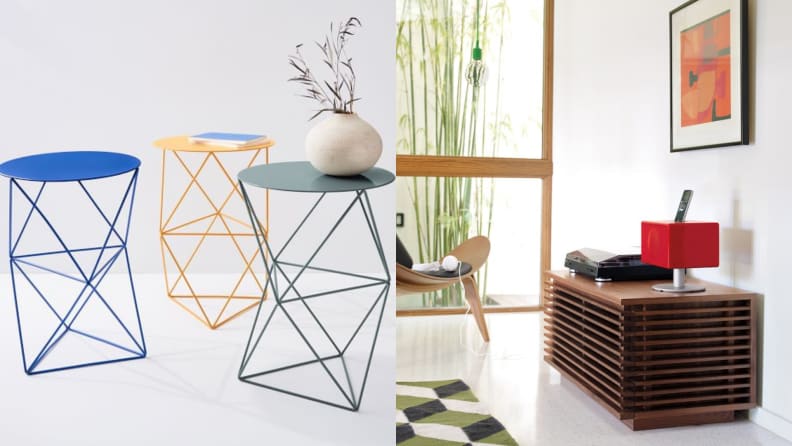
Eric Trine and his Amigo Modern brand has collaborated with West Elm on these modern octahedron pedestal tables, at left. Nathan Yong’s Line Collection, seen at right in the media console, is a favorite at Design Within Reach.
One change that we can attribute to the here and now is that designers are incorporating better technology.
“We have the use of more modern fabrics that have higher durability, and we continue to value engineer pieces so that we can afford them with veneers and more cost-effective materials,” says Simon.
The approach to color, too, has changed, for the mid-century modern-style pieces that are being made in our modern day markets.
“Colors and finishes go beyond the mid-century palette of neutrals, earth tones, metal, glass, vinyl, plywood, Plexiglass, and Lucite. Now, there is a playful spirit, a political perspective, and value for quality, ethically made goods,” says Casey Keasler, founder of Portland-based Casework Interior Design.
Keasler points to Goodee, Blu Dot, Cedar & Moss, and an Amigo Modern collaboration with West Elm, as examples of this new take.
For a truly bold and contemporary take on mid-century modern, Vincent Delley, owner of vintage furniture store The Luxelust Life in Los Angeles, says, “I would keep my eyes on Kelly Wearstler and Justina Blakeney to see future collectibles.”
But other contemporary designers are staying true to form
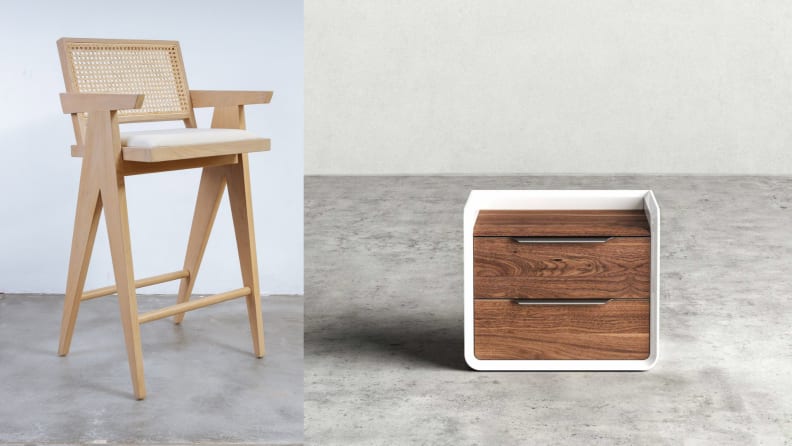
At left, the Jeanneret barstool by France & Son is inspired by Swiss architect Pierre Jeanneret's mid-century modern 1950s' design. Rove Concepts' Grayson nightstand contrasts glossy white and grainy wood, at right.
Simon emphasizes that there is no transformative version of mid-century modern design, which keeps nature front of mind. However, even mid-century modern purists are adopting a slightly greater organic, natural, and bohemian vibe, using natural materials, textures, and tones in furniture pieces.
Simon explains, “It was during the modernist movement that the role of furniture began to be more thoughtful—how the furnishings work ergonomically with the human form, their relation to nature and natural materials. The design lies in simplicity, not a lot of embellishment.”
Authenticity leans on local wood and simple finishes of walnut and flaxseed oils that highlight the wood’s grains.
Keasler explains how even the houses of the times kept nature in mind. “Homes [featured] big windows and open floor plans for the first time in the U.S. The intention was to create a bigger connection to the outdoors,” she says.
New York-based France & Son is a go-to for designers wanting modern versions of the midcentury look, as is Design Within Reach.
As for the actual design, “many of these great pieces of furniture have no need for modernization,” says Simon. “We still buy Saarinen dining tables with their marble tops and tulip bases. It is just as modern today as it was then. So many of these designs are timeless.”
Where to find authentic mid-century modern pieces
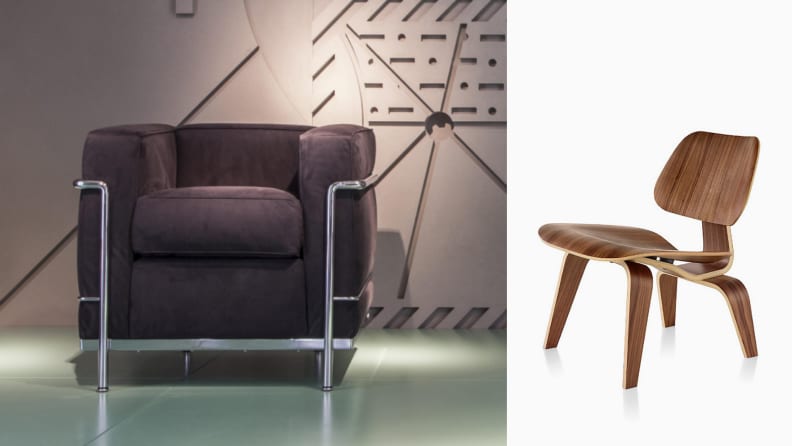
Le Corbusier's LC2 Poltrona at Cassina, and Eames Molded Plywood Lounge Chair with Wood Base at Herman Miller
Los Angeles-based furniture company Modernica owns the rights to reproduce the mid-century modern masters as they were originally envisioned and made.
Design brand Herman Miller supported the mid-century modern movement at its outset, working with George Nelson and Charles and Ray Eames. Today, you can have these looks in your own home. Herman Miller still produces many types of modern-style furniture for your living space, including its Eames’ collection of seating options and small tables.
Simon also heralds high-end Italian furniture manufacturer Cassina, which makes original greats like the LC4 and LC2 by Le Corbusier (designed by Perriand).
Lastly, there’s Knoll, which has been in business since 1939. Delley is a fan. “Without the mass production of companies like Knoll, I’m not sure any of what we identify as mid-century modern would be possible today,” he says.
Retailers who make implementing mid-century modern easy and affordable
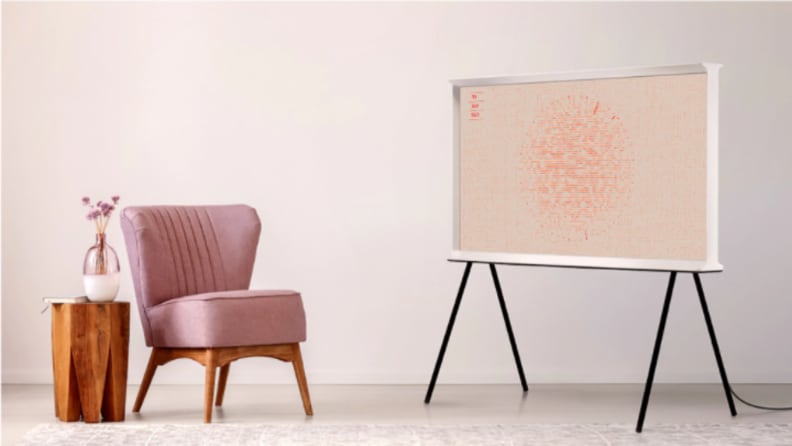
Samsung's Serif television puts an emphasis on design—in this case mid-century modern—as well as functionality.
Rove Concepts and Eternity Modern each replicate mid-century modern design in furniture and accent pieces that sell at more affordable price points.
Mainstream furniture and home décor retailers can be fun for approachable elements, like this pillow from Anthropologie, a walnut dining table at Crate & Barrel, and the acorn desk at West Elm.
Even Samsung joined the party, with its premium Serif television.
No matter your budget, the size of your home, or your interior design aspirations, it's easy to add elements of mid-century modern and make it your own.


